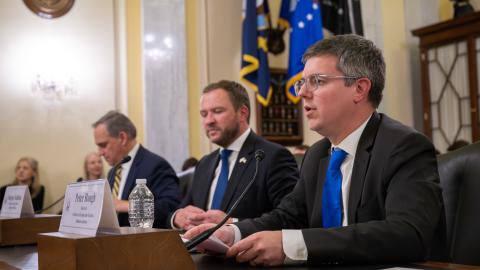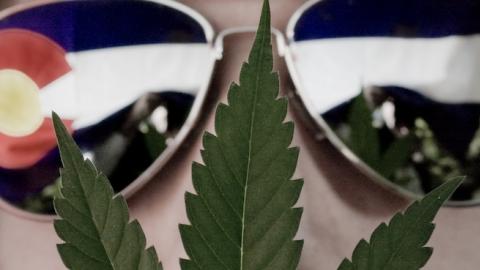A December 21 Washington Post story on Colorado “teen” marijuana use claims that teen use has “sharply dropped” since legalization. This story, however, engages in several data distortions in order to justify the line that commercial, recreational legalization of the drug, as promised by advocates, is somehow protecting the underage.
That conclusion is nonsense, as a full read of the reports show. First, the news story clearly cherry-picks the Health and Human Services Substance Abuse and Mental Health Administration (SAMHSA) data. The claim of a significant decrease holds for only one category of measured use, termed Past Year use, and only that for those aged 12-17.
Moreover, in order to make this claim, the story chose a loosened measure of what counts as statistical significance; that is, it is not the more strict measure of 0.05, but rather significance measured only at the 0.10 level. Under that standard, these results could be expected to happen in one-of-every-ten test measures due to chance, rather than the standard criterion for significance of only one-in-every-twenty. A supposed “sharp drop” should be more robust.
Further, even under this loosened measure for those aged 12-17, the parallel, and more policy relevant measurement category of Past Month (or “current”) marijuana use, showed no statistically significant change between the two periods 2013-2014 and 2014-2015. So where’s the “lesson” on the impact of legalization driving use down?
Even more troubling, the Post story ignored the fact that SAMHSA also provided a longer-term chart from the years 2008-2009 compared to 2014-2015. For the 12-17 year olds in that earlier period, Past Year marijuana use was 18.55 percent (vs. 18.35 percent today).
This means that Past Year use for those 12-17, the data that drove the Post story, actually rose first, to the 20.81 percent of 2013-2014, and has now subsided back to the prior level. This latest one-year return should not be the proper “report card” showing that legalization has had no impact.
One looks in vain for press reporting about that earlier rise to the years 2013-2014, even though that was the period of greatly expanding medical marijuana, and the passing of recreational legalization, 2013-2014. Again, by only reporting the data when they appear to support your favored direction but not when they contradict it, advocates and journalists may be cherry-picking the years that they chose for comparison.
A similar lesson can be seen by looking at Past Month use, which is up for 12-17 year olds for the longer period 2008-2009 to 2014-2015 (10.17 percent to 11.13 percent). Again, that rise was ignored.
__But the most important findings in the new SAMHSA report are that all other categories of marijuana use—be it Past Year or Past Month—have risen sharply for all age groups 12+, 26+, and most revealingly, for the age category 18-25.__
In Colorado, for those 18-25, the rise since 2008-2009 Past Month marijuana use has been from 24.18 percent to 31.75 percent (an increase of 31 percent), and that rise was statistically significant, at the more stringent 0.05 level.
Hence, from the period of great expansion of medical marijuana in that state, along with the passage of legalization, until today, marijuana use has increased 31 percent for those 18-25. Again, where were press reports about that fact?
For 18-25 year olds, even Past Year use, the subject of the headline, also increased by 17 percent over the longer period, and adjudged statistically significant at the 0.05 level (38.59 percent to 45.24 percent).
Finally, those aged 18 and 19 are assuredly “teens,” just as anyone under the age of 21 in Colorado is “underage” and is using illegally by Colorado law (much less federal law). So when we read the headline that “teen marijuana use drops,” that measure does not include all “teens.”
The policy-relevant message lies in the following realization, which seems to have escaped many commentators: Youth will age, every year, into new categories. Those who were exposed to the changes in Colorado marijuana policy when aged 16/17 in 2013 are 18/19 (in a new age category) by 2015. And their use of marijuana is rising, just as those aged 24/25 in 2013 are now in the category 26+, rising the most steeply in marijuana use. They take their norms, attitudes and behavior with them as they age.
Surely it is a reasonable interpretation that the young teens who were exposed to the sudden explosion of commercial, legalized marijuana were affected by that exposure, as shown by their expanding use of the substance beginning at age 18.
By restricting the focus only to the younger teens just entering the reporting measures, and declaring no impact, the cheerleaders for legalization have gone from the lie to the Big Lie. The legalization fantasy is a failure and it cannot be hidden.














